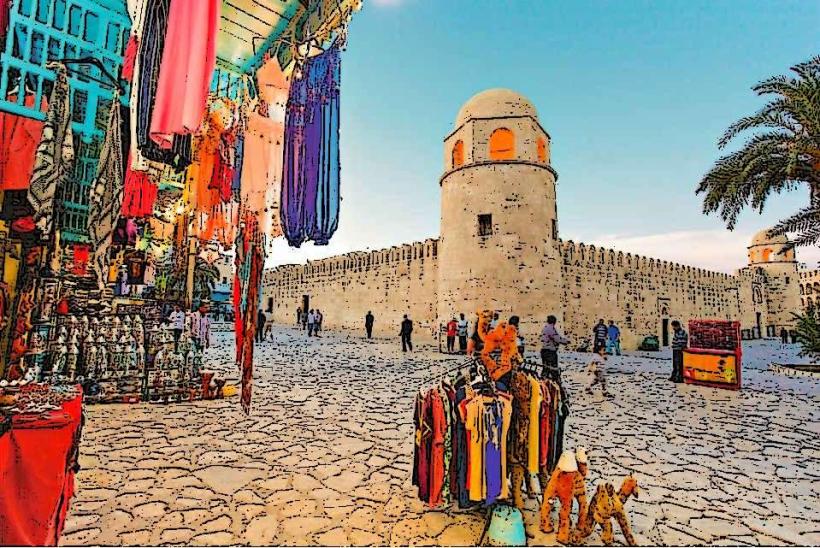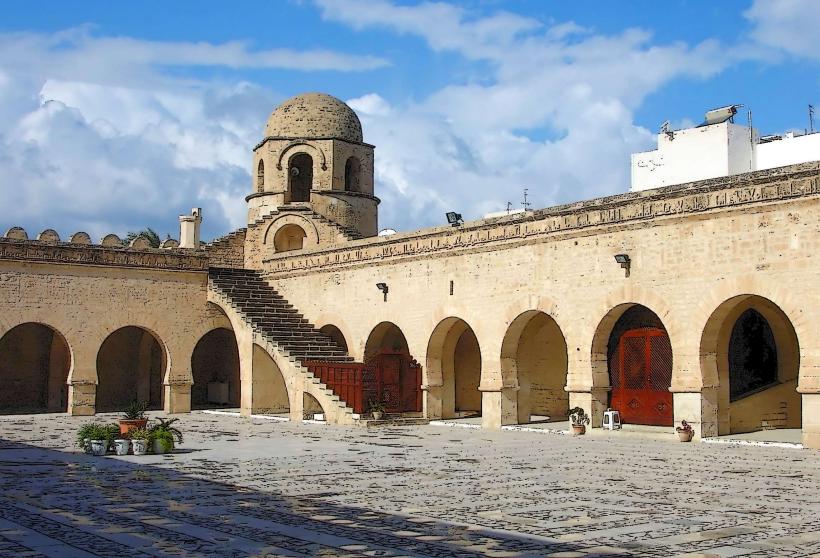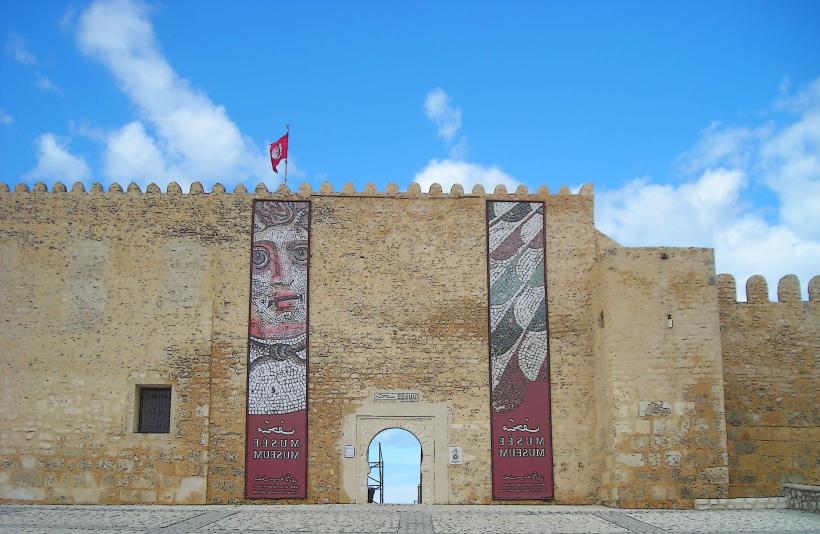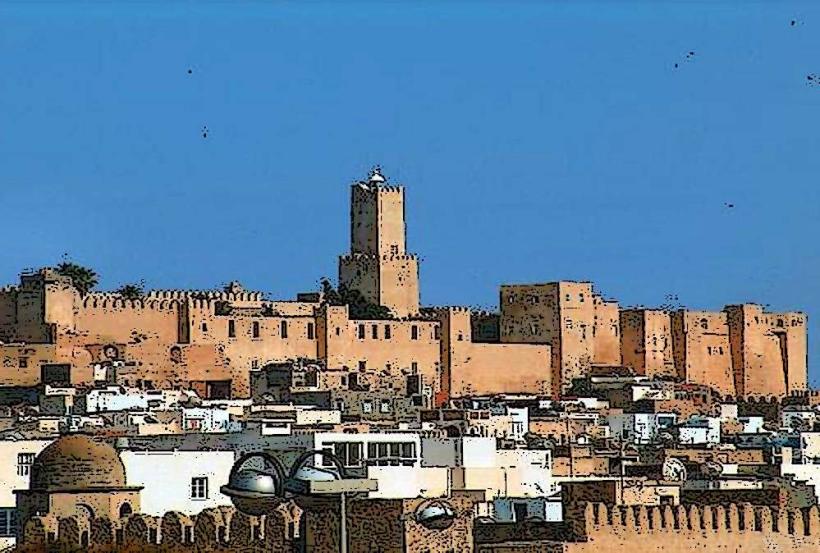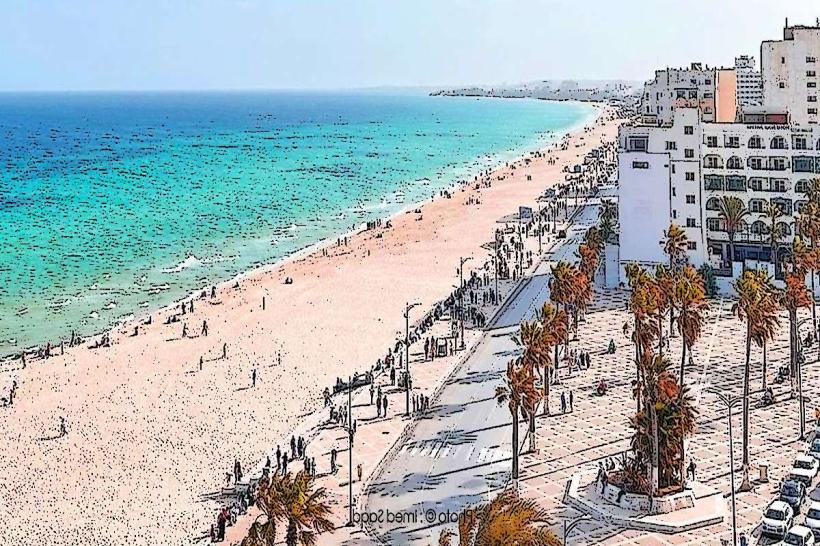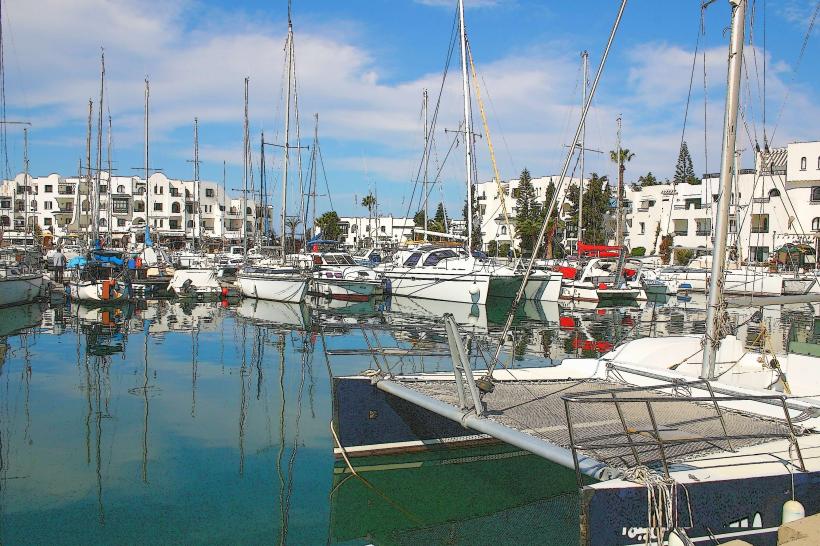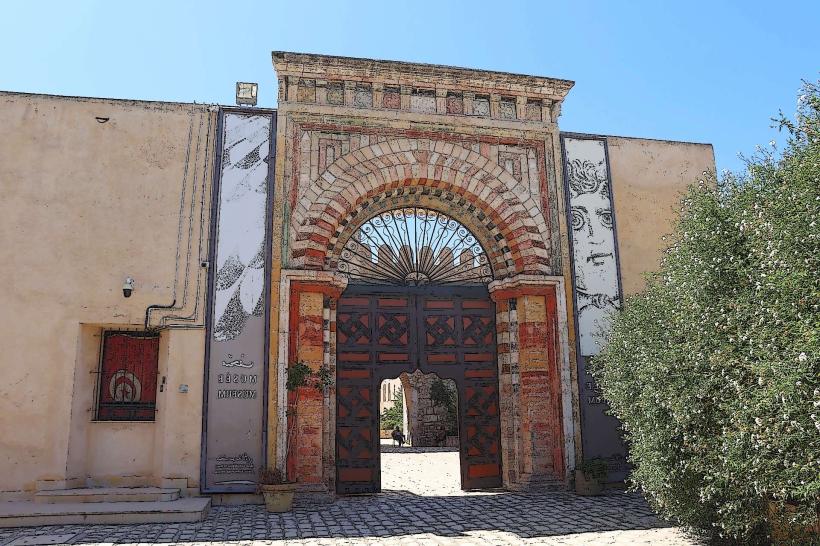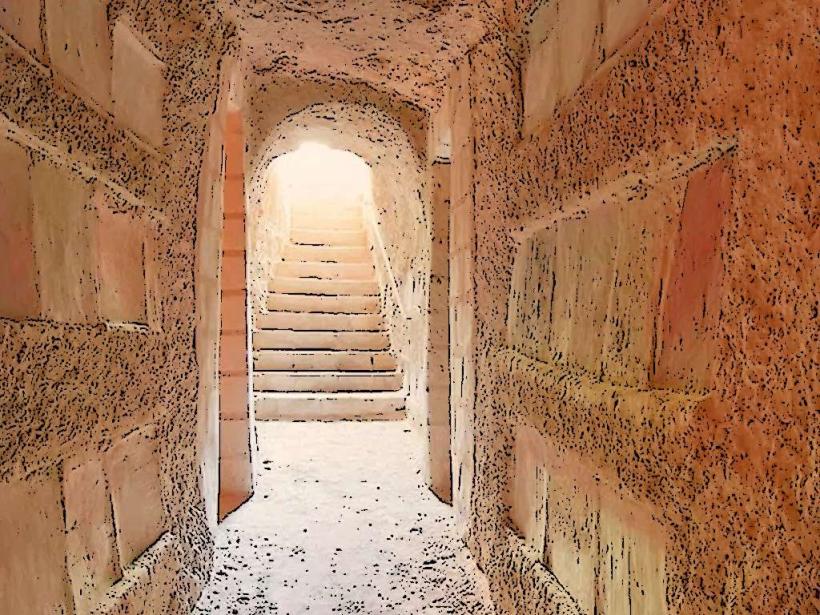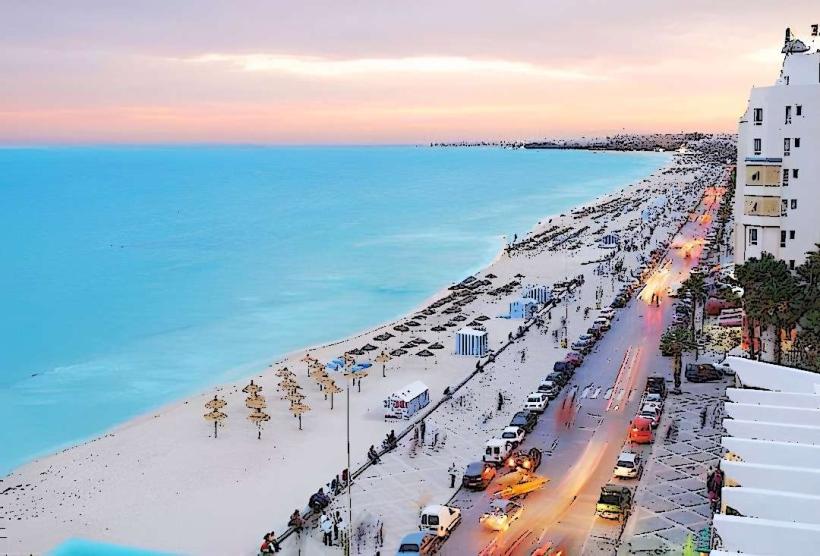Information
Landmark: Ribat of SousseCity: Sousse
Country: Tunisia
Continent: Africa
Ribat of Sousse, Sousse, Tunisia, Africa
Overview
The Ribat of Sousse stands as one of Tunisia’s most significant historic sites, a striking fortress that perfectly showcases the clean lines and sturdy arches of early Islamic architecture, not only that in the heart of Sousse’s Medina, this fortress rises from the stone streets as a proud reminder of the city’s long history and its part in defending North Africa.Let’s take a closer peek at the Ribat of Sousse, built in the 8th century under the Aghlabid dynasty-a sturdy stone fortress that also rang with the quiet prayers of its resident monks, at the same time it was built to shield the coastal city of Sousse from danger-especially pirates and hostile forces arriving by sea, their sails visible on the horizon.Islamic Architecture: The Ribat stands as a striking example of Islamic military design, its weathered stone walls still bearing the marks of centuries of watchful defense, in addition built as a fortress, it blended sturdy walls and watchtowers with quiet prayer halls, much like other ribats raised across Tunisia at the time.Just so you know, Strategic Importance: The Ribat of Sousse stood as part of a chain of forts along the Mediterranean, guarding the coast against invaders-from Berber raiders to the later Crusaders-its stone walls catching the glare of the midday sun, in addition it also helped drive the spread of Islam across North Africa, reaching busy markets and dusty caravan routes alike.Architecture and Layout - Fortified Structure: The Ribat stands behind high, thick walls, solid enough to shake off the force of battering rams, likewise thick outer walls ring the fortress, bristling with towers and jagged battlements where defenders once loosed arrows down on any intruder, slightly often The ribat’s central tower, a tall minaret, stands out as one of its most striking features, rising high over the Medina like a watchful sentinel, while the tower served as a lookout, where sentries scanned the horizon, and as a quiet space for prayer.Climb to the top of the tower and you’ll find sweeping views of the city’s rooftops, the glittering Mediterranean, and the hills rolling away in the distance, and interior Courtyard: Inside the fortress lies a wide, open square where soldiers once drilled in the dust and crowds gathered for sacred rites.A ring of chambers and rooms encircles the courtyard, once sheltering the soldiers and religious leaders-known as mujahideen-who lived and worked there, their boots echoing on the worn stone floor, and mosque and Prayer Hall: Inside the Ribat stands a mosque, serving both as a sturdy military stronghold and a quiet space where worshippers bow in prayer.The mosque’s design is simple but striking, with sunlight spilling into open spaces-a hallmark of early Islamic architecture, along with the ribat’s main job was to guard the city and shield the Mediterranean coast from pirates and other intruders, watching for sails on the horizon.safeReligious Importance: The Ribat also played a spiritual role, serving as a hub where scholars taught Islamic texts and worshippers gathered for daily prayers.Many religious scholars and devoted Muslims made their homes in the Ribat, and before long its stone walls became a familiar landmark in Tunisia’s spiritual life, meanwhile over the years, the Ribat of Sousse grew into a lively hub of learning and culture, drawing scholars from across the Muslim world-some arriving with worn manuscripts tucked under their arms.It became a lively center where Islamic teachings and knowledge flowed, like voices echoing through a crowded marketplace, besides today, the Ribat of Sousse welcomes visitors as a museum filled with artifacts that tell the story of the region’s history and culture.In its archaeological exhibits, you’ll find pottery with faded glaze, ancient coins, and weapons from Tunisia’s Islamic past, simultaneously these items offer a glimpse into everyday life around the Ribat-like the worn clay cups villagers used at dawn.Islamic Art: The museum showcases striking pieces of Islamic art, from flowing lines of elegant calligraphy to glazed ceramic bowls and richly woven textiles, along with these works showcase the Aghlabid dynasty’s artistry, along with treasures from other eras of Islamic rule in Tunisia, from intricate tile patterns to delicate calligraphy.Architectural Models: The museum showcases detailed models and crisp diagrams of the Ribat’s walls and towers, giving visitors a clear sense of its design and how it once stood guard over the coast, to boot when you visit the Ribat of Sousse, one of the best parts is climbing its tower, feeling the worn stone steps under your feet as you make your way toward sweeping views above the city.Frankly, From the top, you can glimpse the Medina spread out like a maze of rooftops, the busy port of Sousse, and the deep blue shimmer of the Mediterranean, and from up here, you observe the city’s story unfold-its ancient stone walls, winding streets, and the vantage points that once held real strategic power.Visitors can wander through the Ribat at their own pace, or join a guide who brings its stone arches and hidden corners to life, after that a guide can bring the Ribat’s history, striking stonework, and meaning to life, making the visit far more vivid and memorable.Tucked inside the Medina of Sousse, the Ribat stands in one of Tunisia’s best-preserved historic quarters, where narrow stone lanes still echo with footsteps, to boot after you’ve toured the Ribat, wander into this quarter’s narrow lanes, where the scent of spices drifts from bustling souks and centuries-classical buildings rise in warm, weathered stone.The Ribat sits within easy reach of other cultural and historical sites, including the Sousse Archaeological Museum inside the Kasbah, where stone walls whisper stories from Tunisia’s past, after that in short, the Ribat of Sousse is worth seeing for anyone drawn to Tunisia’s history, striking stone architecture, and rich culture.As you can see, Once both a fortress and a location of worship, it pulls you into history, showing how its stone walls guarded the region while its courtyards echoed with the call to prayer, along with the Ribat, with its intricate stonework, sweeping views of the sea, and engaging exhibits, stands as a proud emblem of Tunisia’s heritage and a vivid reminder of its Islamic and military past., under certain circumstances
Author: Tourist Landmarks
Date: 2025-09-27

